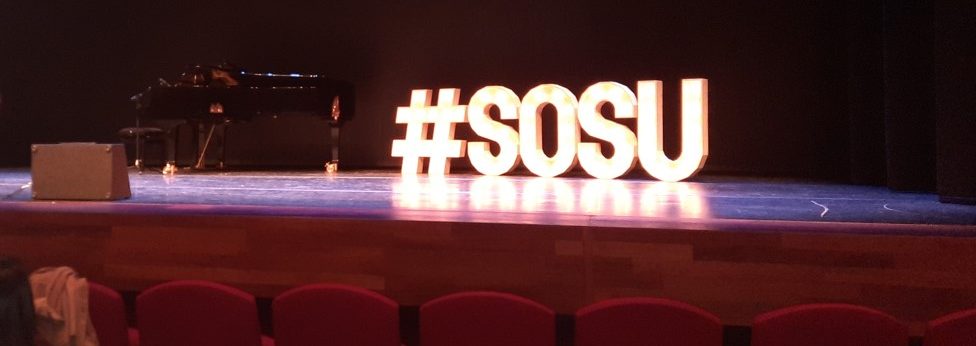One Week Without LinkedIn Recruiter

What is the biggest impact you make as a sourcing trainer?
You share new tips and tricks with recruiters? New tools? Channels? You share the exotic side of sourcing? Or rather, you build the foundations? You share your…wisdom? Those secret methods you actually use when sourcing? The tech stack? Maybe all of it? Something else?
I’ve been thinking about it for years now… what is my personal impact on recruiters I train?
It’s a difficult question as the impact is dependent on the aspiration of the trainer and the student as well. You can run your ever-best training class if your students change nothing… your impact is nothing.
Harsh but true.
If I have the gift of prophecy and can fathom all mysteries and all knowledge, and if I have a faith that can move mountains, but you don’t change your sourcing game, I am nothing.

Here is the story where I believe I see my impact. The story of the most brilliant IT Sourcer from Qualysoft, Ildiko Jakab, who decided to challenge me and herself, too, on our recent Sourcing Masterclass journey. Ildi spent a whole week sourcing without LinkedIn Recruiter. Most honestly, I never thought she would do this. The daily workload, the expectations, KPIs, the recruiting atmosphere, all those beliefs in LinkedIn… all in all: it’s hard to give this scenario a real try. But she has made it! This is her story.
Ladies and Gentlemen, please welcome Ildiko Jakab on stage!
As I got my Sourcing Masterclass Certificate, I decided to do a pilot week when I work without my LinkedIn Recruiter seat.
I sourced for 5 different positions that week:
- 2 Senior Full-stack Developers (Java, Spring, Angular and Java, Spring, React),
- Java (Spring) Backend Developer with minimum 3 years of experience,
- Service Manager,
- Telecommunication Engineer.
I used alternative sourcing tools and platforms as many as I had access to and I tried working with everything I had learnt about. I used the free version of Amazing Hiring, whatsmyname, google x-ray, Github, OctoHR, Facebook Search Engine, Alumni searches, Instant Data Scraper, HireEz extension, Profession CV search, Linkclump, Hunter.io, Contact Out, Lusha and soooo on.
I figured I could reach out to people via their email addresses that were not on LinkedIn. As the contact search went very well, I was able to find emails for 80% of the cases.
During my first campaign, I sent out 26 emails, I worked with a two-attempt-long cadence, and I got 19.2% response (!) rate. If I compare it with my previous response rate in LinkedIn Reports, my average InMail response rate was 18.5% in Q1 2022.
After this, I had another email campaign with 45 Java Developers. I worked with a three-attempt-long cadence this time, and the response rate jumped up to 28%.
What I noticed was that follow-ups were really important, I should stick to this new habit. 😉
It was interesting to witness, that with the same amount of energy I can easily send more InMails on LinkedIn in a shot than 26. The reason is quite simple: this week I had to pay extra attention and creativity to sourcing, but with LinkedIn, I can do the “robot work” with my templates even If I’m half dead.
I also registered to and started to follow new potential candidates on Instagram and Twitter and some of them have already followed me back – YAY! I have not yet written to them as I don’t want to scare them away. For now, it is just better to build the network on these platforms as well.
What went very well next to the contact search is sourcing on Github. Github sourcing was the most useful way to find full-stack and backend developers and once I created a GitHub profile I was sure I would find an email address to them, too, with the .patch technique.
The HireEz extension was extremely useful, too, for google x-ray searches – I want to underline it, big times. HireEz made my life much easier.
There were also things that went not so pretty this week.
- First of all: Facebook. I sent out 3 Facebook messages, but people never replied, these messages probably went into the Other Inbox. Scraping Facebook group members was a waste of time. I got more recruiters than engineers in the list and sorting them out in an Excel was time consuming.
- Tracking my leads was a bit more complicated than before. I had to use an Excel sheet, which was less comfortable than the usual LinkedIn project features.
- I also missed three very useful LinkedIn filters in my searches: new registration, freshly open to work, and years of experience. The first two are super important to me as I check them every morning trying to be the first recruiter who connects with these candidates.
To summarize the week: it was entirely positive. When I had little success, I didn’t blame the tools or techniques as I knew I had to practice more and improve some things. This week though massively helped me change my perception of LinkedIn. Today, I think about LinkedIn as A platform and not THE platform due to the practice and success gained with the techniques mentioned above. From now on, I know I will work in a hybrid model with LinkedIn and with these other channels and methods to get the best and highest sourcing effectiveness.
Photo by Alexander Shatov on Unsplash




well done!!
It definitely inspired me and I will implement a “non-Linkedin-day” with my team :).